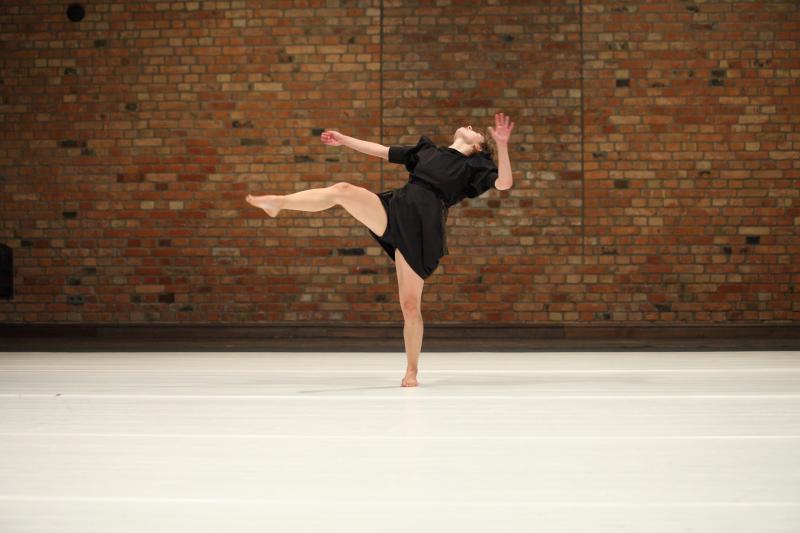
Pictured: Marzena Krzemińska, 5-7-5 HAIKU. Photo: jakub Wittchen.
In September the audiences of the Beijing Fringe Festival will be offered an exciting portion of Polish dance: works by emerging choreographers, Marzena Krzemińska and Janusz Orlik (12-13 September) will be complemented by a piece from Dada von Bzdülöw theatre (26-27 September).Orlik and Dada von Bzdülöw will present pieces inspired by The Rite of Spring, while Krzemińska will perform her solo 5-7-5 HAIKU, created during her Solo Projekt residency at Poznań’s Stary Browar last year. The showcase is presented by the Adam Mickiewicz Institute in association with the Polish embassy in Beijing.
Beijing Fringe Festivalhas been held since 2008, becoming an international event in 2010. It aims to promote independent theatres and help their development. It is mostly addressed to young people and artists, and has been a considerable success with them. Its formula is based on collaboration with the Edinburgh Fringe Festival and the Avignon Theatre Festival, and the Beijing event’s programmes draws inspiration from its Scottish and French counterparts.
About the pieces:
Święto Wiosny[The Rite of Spring] directed by Janusz Orlika is a performance of three dancers/choreographers taking place in a small space, filled with intensive movement. The author is accompanied on stage by two excellent dancers, Joel Claesson of Sweden and Nicholas Keegan of Great Britain. The piece is set to Stravinsky’s music.
5-7-5 Haikuby Marzena Krzemińska is a performance revolving around emotional expression and its kinaesthetic experience. The choreographer is asking how form and structure of a performance influences the involvement and emotions of the audience. She focuses on narration, repeated body shapes and dynamic changes. The piece is set to music composed by Patryk Lichota; costumes were designed by Łukasz Czajkowski.
Dada von Bzdülöw’s Le Sacre, the fortieth piece in the theatre’s history, draws on Igor Stravinsky’s The Rite of Spring, but it bounces off this milestone in the history of dance theatre, to base itself on the apocryphal transcript of the purported original version of the ballet, rejected by Diaghilev. Based on Stravinsky’s score, the music was composed by Mikolaj Trzaska; costumes were designed by
Sławek Blaszewski.
Based on:http://www.culture.pl(sources: press and own materials, by SW)